Trees Birds Mammals Fish Amphibians Reptiles
Wild Algarve
Bookshop
Nectria cinnabarina (Tode) Fr. - Coral Spot
Phylum: Ascomycota - Class: Sordariomycetes - Order: Hypocreales - Family: Nectriaceae
Distribution - Taxonomic History - Etymology - Identification - Reference Sources
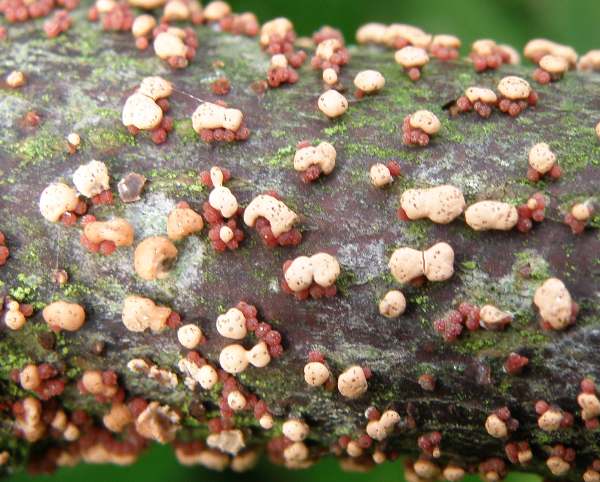
Coral Spot, a weak pathogen of broadleaf trees, goes through a spongy conidial stage (producing asexual spores) and a tough perithecial stage (producing sexal spores) that at a glance look quite similar. Beech is the main host, but this colourful parasite is also fairly common on Sycamore, Horse Chestnut and Hornbeam, but hardly ever on conifers. Particularly susceptible are trees that have already been weakened by other stressing factors such as drought, another fungal infestation or physical damage.
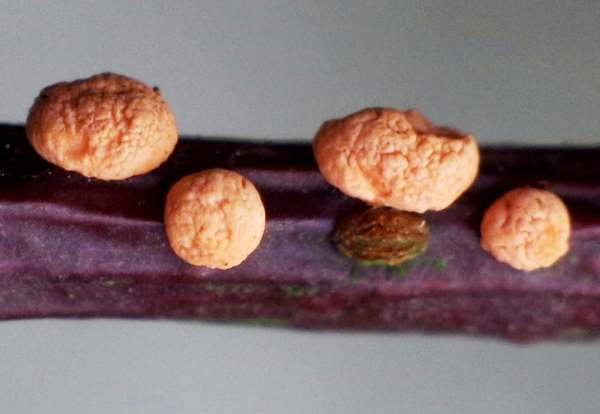
The effect of Coral Spot infection is that (usually small) twigs and branches die back, and then dense clusters of soft, pinhead-sized pink fungal blobs (the conidial or asexual stage in the complex lifecycle of this fungus) break through the thin bark. Later the blobs harden and turn into dark reddish-brown raspberry-like blobs (this is the sexual stage in the lifecycle where ascospores are produced), and by this time the infected timber is so weak that it tends to snap off during windy weather.
Distribution
Nectria cinnabarina is common and widespread throughout Britain and Ireland as well as other parts of mainland Europe, wherever broadleaf trees grow.
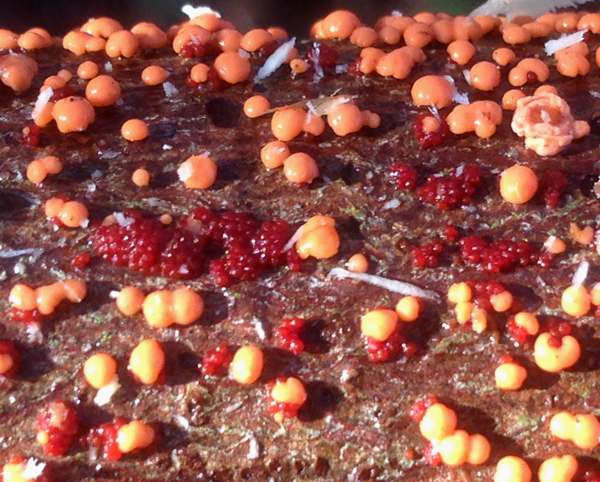
Taxonomic history
The basionym of this species was defined when, in 1791, German mycologist and theologian Heinrich Julius Tode (1733 - 1797) described this ascomycetous fungus under the scientific name Sphaeria cinnabarina. It was Swedish mycologist Elias Magnus Fries who transferred this species to the Nectria genus in 1849, whereupon its currently-accepted scientific name Nectria cinnabarina was established.
Nectria cinnabarina (Tode) Fr. has several synonyms including Tremella purpurea L., Sphaeria cinnabarina Tode, Tubercularia confluens Pers., Sphaeria fragiformis Fr., and Nectria ochracea Grev. & Fr.
Etymology
Nectria, the genus name, comes from the same stem as necrosis and means 'killer'. The specific epithet cinnabarina is equally obvious: it means cinnabar coloured (like red lead).
Identification guide
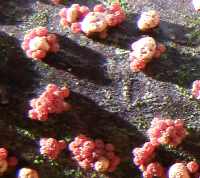 |
Description
Pink blobs, turning eventually to a reddish brown and becoming very hard. The individual blobs are 1 to 4mm across. |
| |
Ascospores
Cylindrical, smooth, 12–25 x 4–9µm, 1-septate; hyaline.
Spore print
White. |
Odour/taste |
Not distinctive. |
Habitat & Ecological role |
Weakly parasitic and then saprobic, on twigs of Beech and occasionally other deciduous hardwoods; rarely on conifers. |
Season |
Mainly summer and autumn in Britain and Ireland, but some fruitbodies can often be found throughout the year. |
Similar species |
There are several other reddish Nectria species and they are difficult to separate using macroscopic characters alone; however, in Britain and Ireland Nectria cinnabarina is the most common of the group. |
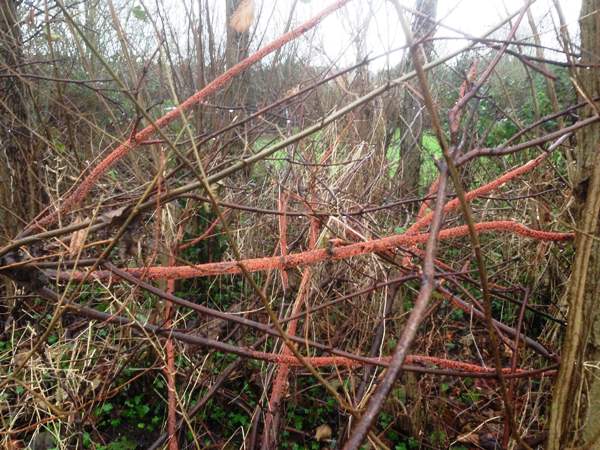
Reference Sources
Fascinated by Fungi, 2nd Edition, Pat O'Reilly 2016, reprinted by Coch-y-bonddu Books in 2022.
Dennis, R.W.G. (1981). British Ascomycetes; Lubrecht & Cramer; ISBN: 3768205525.
Breitenbach, J. & Kränzlin, F. (1984). Fungi of Switzerland. Volume 1: Ascomycetes. Verlag Mykologia: Luzern, Switzerland.
Medardi, G. (2006). Ascomiceti d'Italia. Centro Studi Micologici: Trento.
Dictionary of the Fungi; Paul M. Kirk, Paul F. Cannon, David W. Minter and J. A. Stalpers; CABI, 2008
Taxonomic history and synonym information on these pages is drawn from many sources but in particular from the British Mycological Society's GB Checklist of Fungi.
Acknowledgements
This page includes pictures kindly contributed by Arnor Gullanger and Simon Harding.
Top of page...
Fascinated by Fungi. Back by popular demand, Pat O'Reilly's best-selling 450-page hardback book is available now. The latest second edition was republished with a sparkling new cover design in September 2022 by Coch-y-Bonddu Books. Full details and copies are available from the publisher's online bookshop...